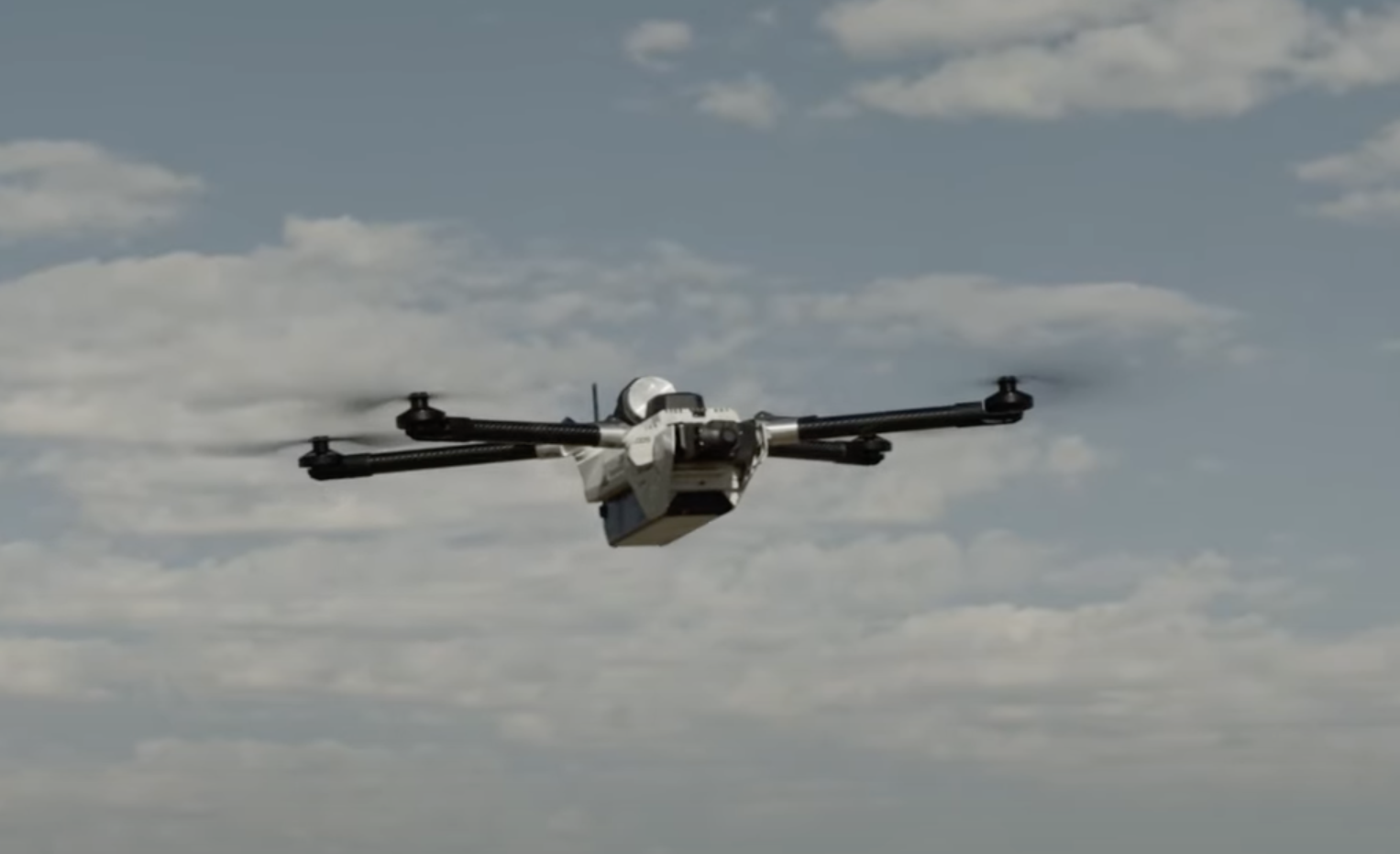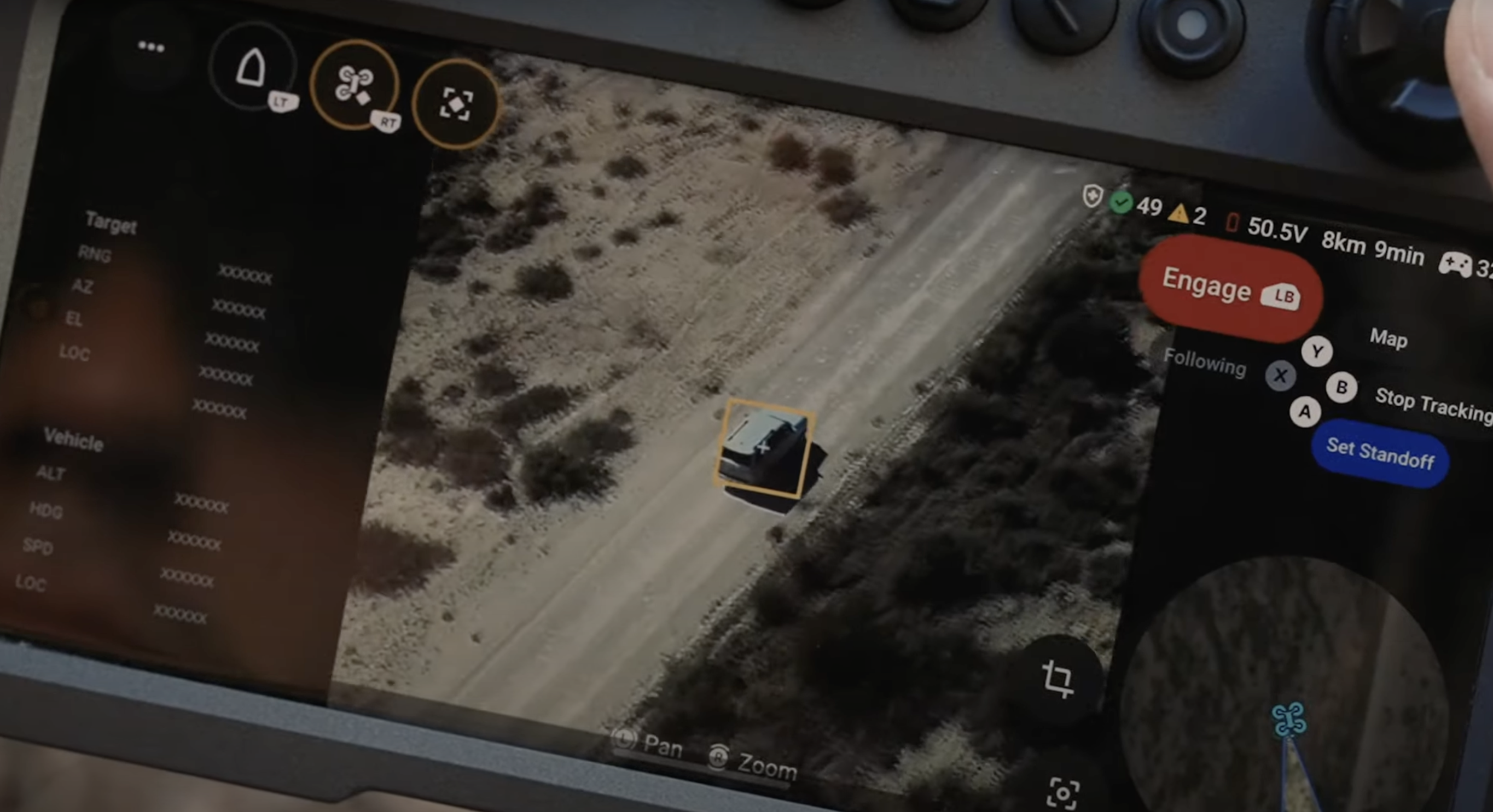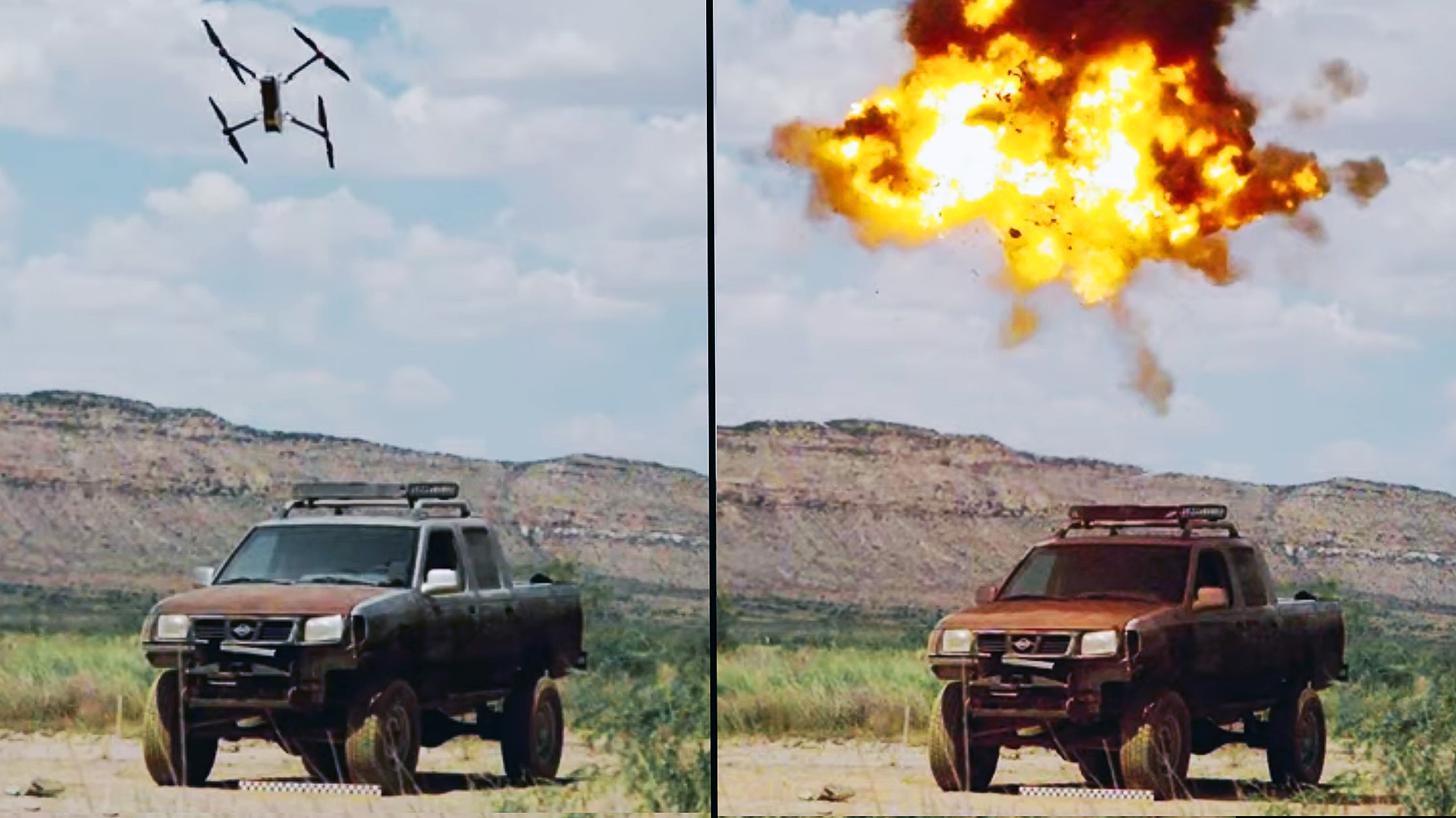Newcomer defense contractor Anduril has revealed its Bolt-M, an machine-learning infused strike drone, a quadcopter-type design that’s easily transportable and aims to put lethal precision firepower in the hands of individual soldiers. Bolt-M is already being lined up for testing by the U.S. Marine Corps, as that service looks to harness the capabilities of kamikaze drones, while its autonomous features point the way to a new generation of loitering munitions that are easier to use and more reliable than those currently fielded. The promise and dangers of AI-enabled lower-end aerial drones on the battlefield is something that TWZ has explored in depth in the past. Anduril is now looking to secure its position in this fast-changing field.
Announced yesterday, the Bolt-M is part of a wider family of autonomous air vehicles that are man-portable and use the same basic vertical takeoff and landing (VTOL) quadcopter platform. While the baseline Bolt is intended for surveillance and search and rescue, the Bolt-M (for munition) is more intriguing, building on the success and proliferation of smaller strike drones that have been used to great effect in Ukraine and elsewhere.

Unlike the low-end kamikaze drones that are proliferating in Ukraine, which are primarily improvized first-person view (FPV) types, the Bolt-M uses machine learning and automation from the outset to make it easier to employ. Onboard software is used to “automate the flight behaviors required to accurately track and strike a target, while providing human operators with four simple decisions: where to look, what to follow, how to engage, and when to strike,” the company explains in a press release.
While the pilot of an FPV drone requires extensive training to successfully find and strike targets, the Bolt-M aims to provide soldiers with a much simpler way of achieving similar effects.

At the heart of Bolt-M is Anduril’s Lattice software platform that leverages AI and machine learning technologies. This automates the flight behaviors required to navigate to, find, track, and strike dynamic targets.
While the drone features semi-autonomous waypoint navigation, the operator can also modify the flightpath using a touchscreen interface, although more basic navigation decisions are still made by the Lattice software, allowing the user to concentrate on other tasks. The operator can also select the distance from the target at which the drone should loiter, and the type of engagement profile to execute, depending on the target type and battlefield conditions.
The drone’s object tracking capability means that the operator can draw a bounding box around any visually-acquired target using the drone’s dual electro-optical and infrared camera. Bolt-M will then follow that target autonomously, but if a new threat emerges, the soldier can select it instead, meaning that time-sensitive and pop-up threats can be prosecuted. Bolt-M can also be used multiple times for reconnaissance in this manner.

Automated target tracking of this kind is already making its way to the battlefield in Ukraine, albeit in a more rudimentary form. Being able to lock on to a target and complete the attack even if a communications link is degraded or lost entirely is extremely beneficial. First, it overcomes major issues with line-of-sight connectivity as the drone dives low to the ground to hit its target, where the feed to its controller degrades due topography and structures. It also makes the drone far less vulnerable to short-range electronic warfare systems, especially those mounted on vehicles themselves. The drone can continue its terminal attack run even if its communications link is totally disrupted via electroinc attack during the terminal phase of its attack run.
There are other precedents for this kind of technology, notably the AeroVironment Switchblade, a series of miniature loitering munitions that have been in production for well over a decade and used extensively in Ukraine. These also offer a limited degree of autonomous attack capability, since, like the Bolt-M, the drone can fly itself to its target once it is designated by a human. In the Switchblade, this feature serves, above all, to improve the probability of a kill, especially when striking moving targets, but it is more austere than the suite of technology Anduril is brining forward with its Bolt-M.

More complex engagements can be carried out by the Bolt-M, too. For example, once a target is identified in Lattice, the soldier can select a standoff position for the drone. Bolt-M will remain there, typically out of visual or acoustic detection range, keeping track of the target and then striking it once instructed by the operator to do so. The soldier operating the drone can also optimize that terminal attack, selecting the most effective engagement angle and warhead fuzing, for example.
Throughout, the operator can intervene in the engagement process, ensuring that the drone retains a human-in-the-loop, at least till the attack order is finalized, in line with U.S. Department of Defense protocol for lethal autonomous weapons.

It’s worth noting that profusion of videos showing the successful employment of FPV drones in Ukraine — sometimes achieving accuracy that is hard to believe — belies the fact that many of these drones fail to hit their target. The need to make this class of weapon more reliable and resilient is pressing, although it remains a factor that will be balanced against cost and quality.
Anduril also envisages Bolt-M feeding targeting coordinates and other battlefield information into a broader data-sharing network, via Lattice. In this way, information gathered by Bolt-series drones can be shared with third-party platforms and commanders. Operating on a common software platform and across a common network, it’s also possible that Bolt-M could be rapidly adapted to make cooperative ‘swarming’ attacks with a high degree of autonomy, although such a function hasn’t been disclosed yet.
In terms of performance, the Bolt-M drone has more than 40 minutes of endurance and a range of around 12 miles. The types of warheads include anti-personnel and anti-materiel, each of which can weigh up to three pounds. Different munition payloads can be carried, including some developed in collaboration with Kraken Kinetics, and others from Anduril. Typical targets include static or moving ground-based targets, including light vehicles, dismounted personnel, trenches, and more, Anduril says.
The Bolt-M is provided with a mountable ground control station (GCS), and it’s designed for user safety, including an electronic safe and arm device (ESAD), meaning it can be transported across the battlefield without risk of detonation, and can be unpacked and launched in only five minutes. The same GCS can also be used for training and simulation, using the handheld interface.

Clearly, Bolt-M is inspired by the effectiveness of FPV drones in Ukraine and in other combat theaters but expands on the advantages of these kinds of lightweight, man-portable loitering munitions. By introducing a refined user interface powered by very capable and rapidly adaptable software, it should be far more reliable, easier to operate, and effective than an improvised FPV drone. That being said, cost remains a glaring unknown. While added features are great to have and better effectiveness on the battlefield is always a good thing, brining the price down to a point where Bolt-M can be bought in very large numbers could be critical to its success. This is also a field that is rapidly growing in terms of competition and is bound to get very price competitive in the near future.
So far, we don’t know the exact developmental status of Bolt-M, however, Anduril has confirmed that the U.S. Marine Corps will start testing it over the next six months, as part of “a pretty rigorous test and evaluation campaign,” according to Anduril Chief Strategy Officer Chris Brose. This compressed timeline suggests that Bolt-M may well be informed by the company having tested similar capabilities already in Ukraine, as has been suggested.
In April this year, Anduril was one of three companies (the others being Teledyne FLIR Defense and AeroVironment) that received a U.S. Marine Corps Systems Command (MARCORSYSCOM) contract under its Organic Precision Fires-Light (OPF-L) program. While OPF-L doesn’t specifically call for autonomous operations, it is looking for easy-to-use, explosives-laden, man-portable loitering munitions, as well as launchers for these weapons on ground vehicles and uncrewed surface vessels.
Regardless, the appearance of Bolt-M is another very clear indicator that highly automated, feature rich, production class lower-end strike drones are fast becoming a reality.
Contact the author: thomas@thewarzone.com
